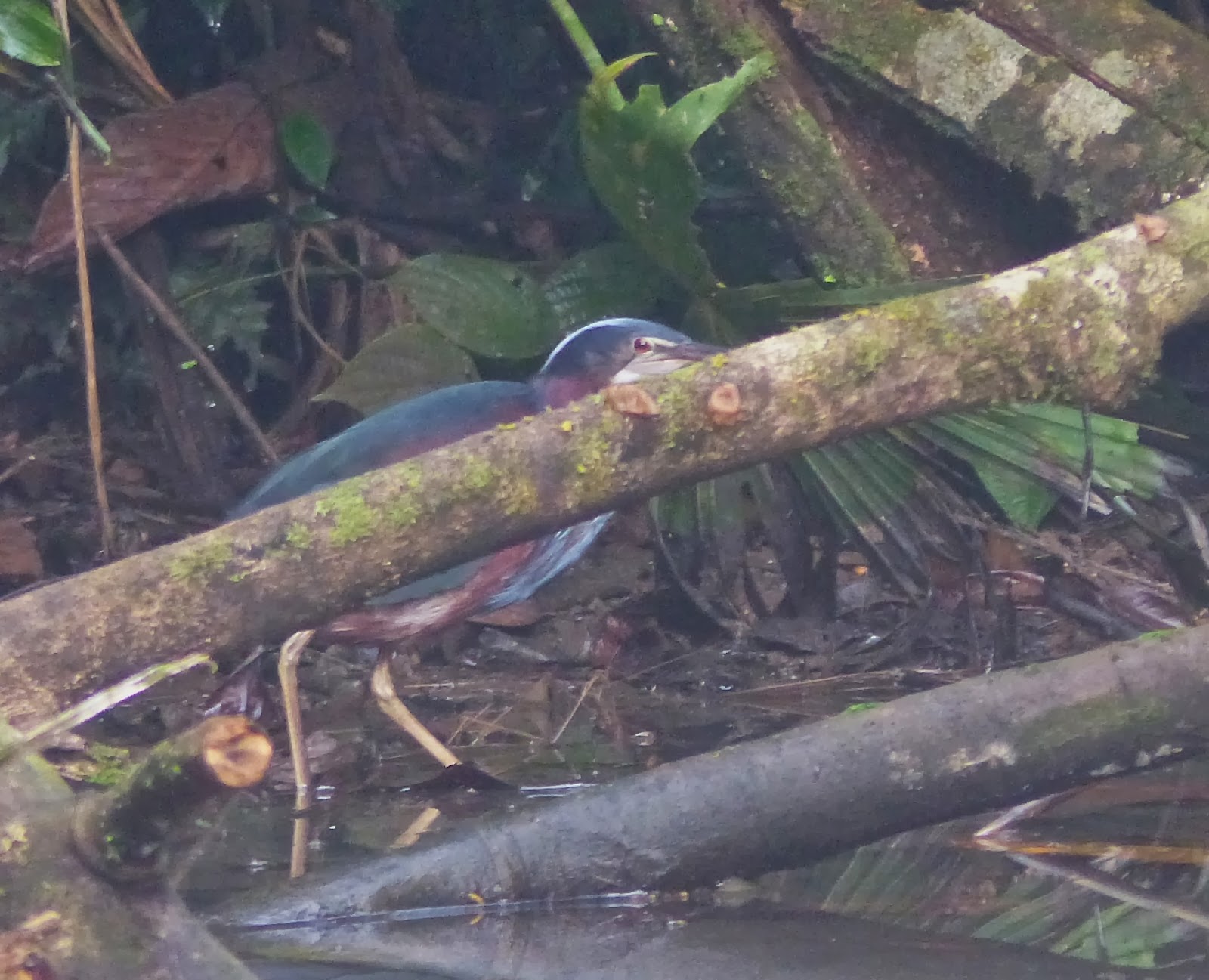As I wrote in my prior blog entry - such a great long day, so many birds, so many photos. I am trying to remember back to this day - of all, I think it was really the tops - read all the way to the end for the day's end finale.
Poor photo of Roadside Hawk (Buteo magnirostris).
One of our escapes for a few good birds.
Dot-winged Antwren (Microrhopias quixensis)
Black-hooded Antshrike (Thamnophilus bridgesi), endemic to CR and western Panama
Pug-nosed Anole (Norops capito).
Breakfast on our second morning - again very good. The thing is - whoever was doing the cooking at Esquinas was a very good cook! Each evening meal started with a soup that was amazing each time.

There is a story about the ecological disaster of pineapple growing in Costa Rica. I came across the pineapple plant above growing on the grounds of the lodge - perhaps secondary to a stray seed or plant. On our way to Esquinas we passed some pineapple growing fields and Vernon discussed with us the terrible ecological consequences of introduced pineapple growing on a massive scale - 600,000 hectacres in such a small country. How does a country like Costa Rica fight Dole and Delmonte? Vernon explained how pineapple is being grown, impossible to go into any length here, but it's bad. Basically its grown in a complete monoculture environment, of use to nothing else, with lots and lots of fertilizers flowing into nearby rivers and streams, etc. I love fresh pineapple and this really caused me to think twice.

This bird calmly wandered through the grounds of the Esquinas Lodge, completely unperturbed as stunned birders chased it for photos. Female Great Curassow (Crax rubra). Truly spectacular. The male bird, which we did not see, is black.
Slaty-tailed Trogan (Trogan massena) pair. It was very hot and the male, with mouth open, was trying to dissipate the heat.
Yellow Tyrannulet (Capsiempis flaveola).
Crimson-fronted Parakeet (Aratinga finschi).
Handsome horse!
I love the dramatic colors of sky and land. Costa Rica is a beautiful country.
Red-breasted Blackbird (Sturnella militaris). I saw only two of these birds, both as above, perched far out in the field. I found the bright red breast of this bird completely intriguing and beautiful.
Crested Caracara (Caracara cheriway)
Ruddy-breasted Seedeater (Sporophila minuta), a bird that is often difficult to see.
Hoffmann's Woodpecker (Melanerpes hoffmanni), flew in and perched next to the Ruddy-breasted Seedeater on same utility wire.
Above is a makeshift wooden bridge that our loaded van had to drive over - a few times.
We returned from daytime birding for dinner and it began to rain heavily. There is something about eating dinner in an open rainforest dining room while it rains outside that makes the whole experience richer. We planned to go owling this night - but, there would be no owling in the rain. Suddenly, the rain switched off. Just as we were thinking that owling would be out of the question, we loaded up in the van.
Another three owl night was upon us. First, the bright eye shine of a perched
Common Potoo (Nyctibius griseus) was picked up in a field. We got decent looks through the spotting scope. Second,
Tropical Screech Owl (Megascops choliba) was perched and hunting from on a diagonal wire in a small field right next to the road. Third, a
Striped Owl (Pseudoscops clamator) was perched on a utility wire directly over the center of the road. Finally, and this was pretty neat, Lathe actually saw a large bird fly in to perch on a roadside utility wire - amazingly, it was a spectacular
Black and While Owl (Ciccaba nigrolineata). We got excellent long looks at all of these birds. The Striped and the Black and White owls, in particular, were amazing in their appearance. With the exception of the potoo, not a single vocalization was played to find the owls. They were just there, perched and cooperative. A search for the Spectacled Owl back near the lodge was unsuccessful.
To be continued ... a very special bird on our final morning at Esquinas Rainforest Lodge!






















































